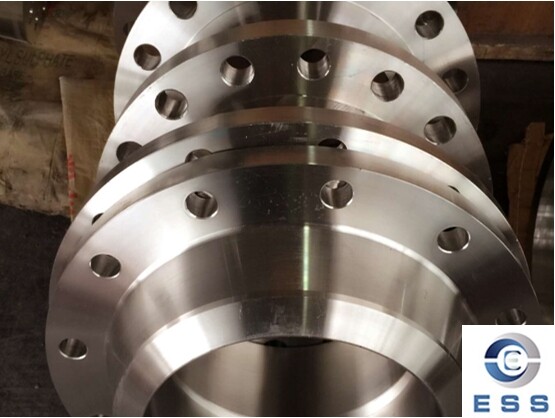Understanding the above five common flange grade
standards and their characteristics, we can better select and apply flanges of
different grades to meet the needs of different engineering projects. In
practical applications, it is crucial to select the appropriate flange grade
according to the specific engineering requirements and the parameters of the
pipeline system, and it also helps to select the appropriate flange supplier.

Features of flange grade standards
1. The higher the standard grade, the
stronger the pressure bearing capacity of the flange connection, but the
corresponding production cost will also increase.
2. Different flange standard grades cannot
be mixed and need to be connected according to flanges of the same standard
grade.
3. Flanges of the same standard grade are
suitable for pipeline systems of different pressure grades. For example,
PN1.6MPa flanges are suitable for pipeline systems with nominal pressure grades
of 1.0, 1.6 and 2.5MPa.
4. Different flange standards are suitable
for different media and temperature ranges, and the appropriate flange standard
grade needs to be selected according to specific working conditions.
Commonly used international flange grade
standards
1. ANSI B16.5
ANSI B16.5 is the American national
standard for flange connection. It is the same as ASME B16.5 and is the most
widely used flange standard. ANSI B16.5 covers a pipe diameter range from 1/2
inch to 24 inches, grades from 150# to 2500#, and includes several different
shapes of face seals.
2. JIS B2220
JIS B2220 is a flange connection standard
formulated by Japan, with five grades of 10K, 16K, 20K, 30K, and 40K, of which
10K and 20K are the main grades. The sealing surface of the JIS B2220 flange
surface adopts two types: flat type and flange type, which are suitable for
different pressure grades.
3. DIN 2501
DIN 2501 is a German standard with five
grades of PN6, PN10, PN16, PN25, and PN40. The flange connection surface of DIN
2501 adopts two shapes: circular surface and flange surface. The flange
connection of the flange surface has higher sealing performance.
4. EN 1092
EN 1092 is a European joint standard,
including five connection methods: type 1 (plate flange), type 2 (flange
flange), type 5 (reverse cover flange), type 11 (blind cover flange) and type
12 (hinge flange). The flange connection surface of EN 1092 adopts two shapes:
circular surface and flange surface, which can achieve standard
interchangeability.
5. GB/T 9119
GB/T 9119 is a flange connection standard
formulated by China, including 12 grades such as PN0.25, PN0.6, PN1.0, PN1.6,
PN2.5, PN4.0, PN6.3, PN10.0, PN16.0, PN25.0, PN42.0, etc. The flange connection
surface of GB/T 9119 standard adopts two shapes: flat type and flange type.
Application scenario
1. ANSI B16.5 flange is widely used in
chemical, petroleum, electric power, papermaking, shipbuilding, water treatment
and other industries and various pipeline systems. It is suitable for various
pressures, temperatures and fluids.
2. JIS B2220 flange is suitable for low
pressure and high temperature occasions, mainly used in pipeline systems in
water treatment, chemical, mining, food processing and other fields.
3. DIN 2501 flange is mainly suitable for
low and medium pressure pipeline systems in the fields of shipbuilding,
chemical, food, pharmaceutical, electric power and other fields.
4. EN 1092 flange is widely used in
pipeline systems in equipment, machines and various industrial buildings.
5. GB/T 9119 flange is widely used in
pipeline systems in the fields of petroleum, chemical, metallurgy, electric
power, water treatment and other fields.
Summary
The above introduction of common flange
grade standards includes the international common flange standard grades and
applicable scope. In the process of using flange connection, it is necessary to
select the appropriate flange standard grade according to the specific working
conditions to ensure the safety and reliability of the connection.













 Eastern Steel Manufacturing Co.,Ltd not only improve product production and sales services, but also provide additional value-added services. As long as you need, we can complete your specific needs together.
Eastern Steel Manufacturing Co.,Ltd not only improve product production and sales services, but also provide additional value-added services. As long as you need, we can complete your specific needs together.










